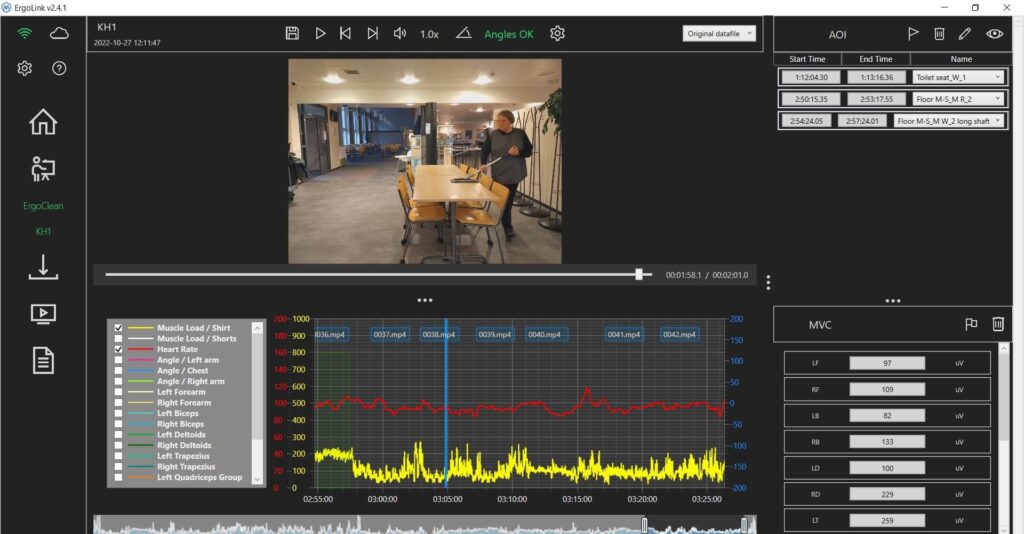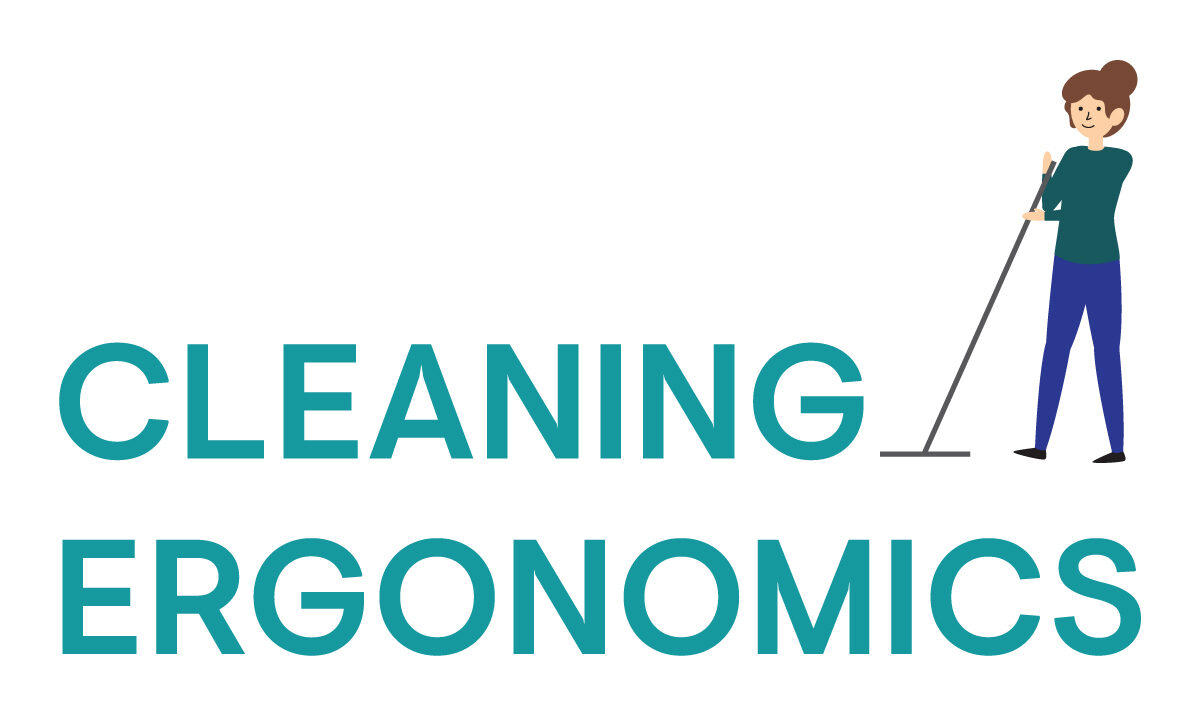Measurment results are analyzed and raport is done!
The measurements used smart clothing and technology from the Finnish company Myontec. Motion sensors in the smart shirt and shorts were used to measure the load on the arms, shoulder area and thigh muscles, the number of micro-breaks during muscle work and the elevated position of the upper arms. It should be noted that not all muscle groups were measured with the smart clothing, e.g. the smart wear for measuring back load was not used.
Including repetitions, 111 tests were performed. In some tests the work was deliberately done incorrectly to show how poor ergonomics is reflected in the results. The tests are part of the ErgoClean project, which involves representatives from Estonia, Finland, Hungary, and the Netherlands. There are differences in cleaning methods and practices between countries. For this reason, methods that were not commonly used in all project countries were also selected for testing.
The tests were carried out in Finland during October and November 2022 in cooperation with the staff of Keuda Cleaning Services. Two cleaners were involved in the studies. Each of the employees performed two repetitions of the tested methods.
The report was prepared by Tarja Valkosalo, Propuhtaus.
Read raport HERE

The aim of smart wear tests was
- To receive visualizations about muscle loading when cleaning
- To get information about muscle loading in different kind of cleaning methods
- 111 tests were made and videos analyzed
The objectives were to compare
- damp, moist and wet methods when mopping a floor and wiping a table
- different kind of tools when mopping and wiping
- different kind of methods when mopping and wiping
- the effect on physical load of a too long a shaft and too wide a movement when mopping
- manual floor cleaning methods to machine cleaning
- different ways to wring a cleaning cloth
- using a sponge, dishwashing brush and microfiber cloth when cleaning a sink
- vacuuming a textile floor with vacuum cleaner vs. upright suction cleaner (carpet cleaner), back rack vacuum cleaner
Results in short
- While cleaning, the amount of muscle load was individual, but the results were consistent
- The amount of moisture in microfiber cloths and mops affects muscle stress
- It’s beneficial to use machines
- The tool has an effect on muscle load
- Too long a shaft and too wide a movement clearly increase muscle load
- It’s a bit less loading to mop backwards than forwards
- It is advantageous to use the strength and movement of the leg muscles
- Avoid sideways movements when wiping surfaces
- If you don’t master the right way of working, the muscle load is higher
- Do not wring cleaning cloths, pre-moisten
- It’s a bit less loading to mop backwards than forwards
- It is advantageous to use the strength and movement of the leg muscles
- Avoid sideways movements when wiping surfaces
- If you don’t master the right way of working, the muscle load is higher
- Do not wring cleaning cloths, pre-moisten

